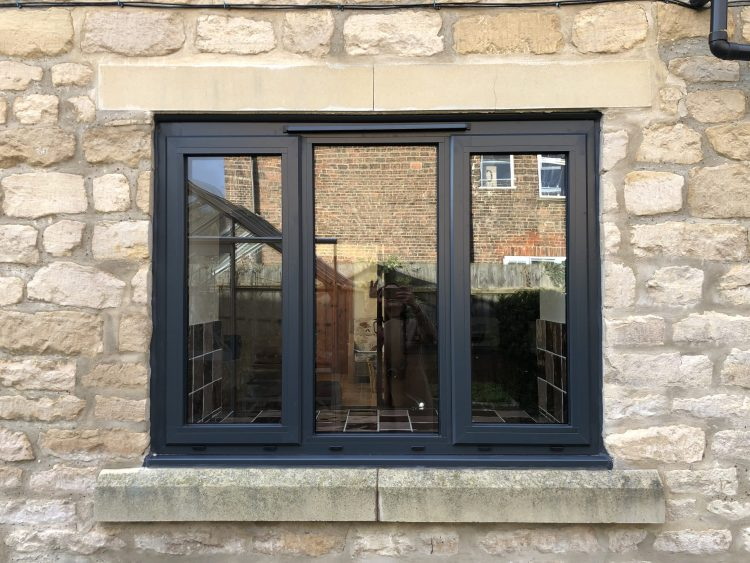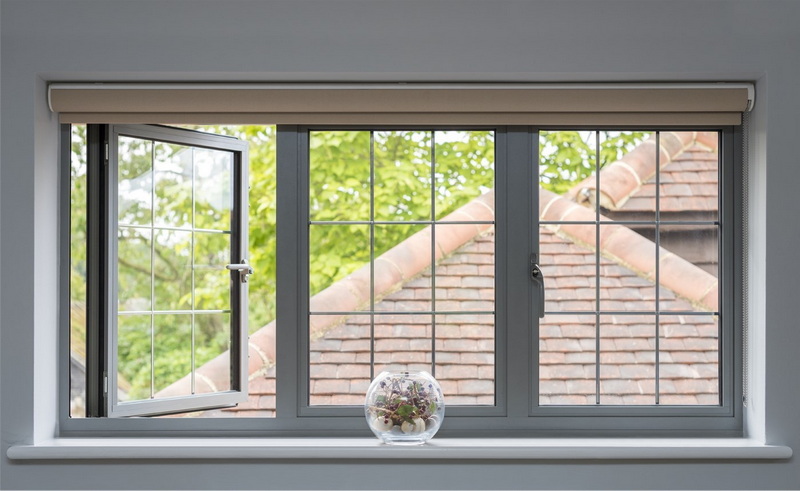English


Views: 222 Author: Dream Publish Time: 2025-01-19 Origin: Site











Content Menu
● Understanding the Science Behind Aluminum Foil on Windows
● The Risks of Using Aluminum Foil on Windows
● Best Practices for Using Aluminum Foil
● Alternatives to Aluminum Foil
● Health Concerns Related to Aluminum Exposure
● Environmental Impact of Aluminum Foil
● Practical Tips for Installation
● FAQ
>> 1. Can aluminum foil damage my windows?
>> 2. Will using aluminum foil void my window warranty?
>> 3. What are some safe alternatives to aluminum foil?
>> 4. How long can I leave aluminum foil on my windows?
>> 5. Does aluminum foil block UV rays?
Aluminum foil has long been a popular, albeit unconventional, method for managing heat and light in homes. Many people resort to this method during hot summer months to reflect sunlight and keep their interiors cooler. However, the safety and effectiveness of using aluminum foil on windows is a topic of debate. This article explores the pros and cons of this practice, provides insights into its potential risks, and offers alternatives for effective window treatments.

Aluminum foil is known for its excellent reflective properties, reflecting over 90% of radiant heat. When applied to windows, it can significantly reduce indoor temperatures by preventing sunlight from entering and transforming into thermal energy. This is particularly beneficial in homes without air conditioning or those looking to cut down on energy costs during peak summer months.
1. Heat Reflection: Aluminum foil reflects sunlight away from the glass surface, preventing it from heating up and subsequently warming the air inside the room.
2. Energy Efficiency: By blocking solar radiation, aluminum foil reduces the reliance on cooling systems, which can lead to lower energy bills.
3. UV Protection: Aluminum foil can block harmful UV rays that can fade furniture and damage indoor plants.
4. Light Control: It can effectively block out unwanted light, creating a darker environment conducive to sleep or relaxation.
5. Privacy Enhancement: Aluminum foil can obscure visibility from outside, providing an added layer of privacy.
While aluminum foil can provide temporary relief from heat, it also poses several risks that homeowners should consider:
1. Thermal Stress: When aluminum foil is applied directly to windows, it can create uneven heating. The glass may become excessively hot due to trapped heat, leading to potential cracking or shattering.
2. Voiding Warranties: Many window manufacturers warn against using aftermarket products like aluminum foil. Applying it may void warranties, leaving homeowners liable for costly repairs if damage occurs.
3. Aesthetic Concerns: Aluminum foil is not visually appealing and can detract from the overall appearance of a home.
4. Residue Issues: Prolonged use of aluminum foil may leave behind a residue or pattern on glass that can be difficult to clean.
5. Fire Hazards: Although aluminum itself is not flammable, improperly placed foil can reflect sunlight onto flammable materials or create hot spots that may pose fire risks.
If you decide to use aluminum foil on your windows, consider these best practices to minimize risks:
- Apply Externally: For optimal results and safety, apply aluminum foil to the outside of windows rather than the inside. This prevents sunlight from heating the glass itself and reduces thermal stress.
- Use Cardboard Backing: Place a piece of cardboard between the window and aluminum foil to absorb some heat before it reaches the glass.
- Monitor Regularly: Check windows frequently during hot weather to ensure they are not overheating or showing signs of damage.
- Choose Heavy-Duty Foil: Thicker aluminum foil can withstand higher temperatures better than regular kitchen foil, reducing risks associated with heat buildup.
If concerns about using aluminum foil persist, several alternatives provide similar benefits without associated risks:
- Reflective Window Films: These films can be applied directly to glass surfaces and are designed specifically for heat reflection while allowing light in. They come in various tints and levels of transparency, allowing homeowners to customize their light control while maintaining aesthetics.
- Blackout Curtains: Available in various colors and styles, blackout curtains effectively block light without aesthetic drawbacks. They also provide insulation benefits during winter months by keeping warm air inside.
- Mylar Blankets: Mylar reflects over 99% of light and is often used as an emergency blanket; it can serve as an effective temporary solution for window coverings. These blankets are lightweight and easy to install but may require additional support to stay in place.
- Shade Trees: Planting trees around your home can provide natural shade, reducing heat gain without any installation hassle. Trees not only help cool your home but also improve air quality and enhance curb appeal.
- Solar Shades: These are specially designed fabrics that allow light in while blocking UV rays and reducing glare. They come in various opacities and colors to suit different preferences and decor styles.

In addition to thermal considerations, there are ongoing discussions about potential health risks associated with aluminum exposure. While everyday contact with aluminum through cooking utensils and food storage is generally considered safe by health experts, concerns arise when aluminum leaches into food during cooking or storage—particularly with acidic foods like tomatoes or citrus fruits.
Research indicates that while small amounts of aluminum may enter the body through food or water consumption, most is quickly excreted. However, prolonged exposure at high levels could lead to toxicity issues affecting brain function and other bodily systems. Some studies have suggested a link between high aluminum levels and neurodegenerative diseases such as Alzheimer's disease; however, more research is needed in this area for conclusive evidence.
The environmental implications of using aluminum foil are also noteworthy. Although it is recyclable, many consumers discard it after a single use due to its lightweight nature. This contributes significantly to waste problems and pollution concerns. To mitigate these impacts:
- Consider reusing aluminum foil whenever possible instead of discarding it after one use.
- Explore options for recycling used aluminum foil properly by cleaning it before placing it in recycling bins since contaminated foils often end up in landfills.
- Opt for more sustainable alternatives like beeswax wraps or silicone covers that offer similar benefits without contributing significantly to waste.
If you choose to install aluminum foil on your windows for temporary relief from heat:
1. Preparation: Clean your windows thoroughly before applying the foil; dirt or grime can affect adhesion.
2. Cutting the Foil: Measure your window dimensions accurately and cut the foil accordingly—allowing for some overlap at edges helps secure it better.
3. Application Method: Use double-sided tape or adhesive spray designed for temporary applications; avoid permanent adhesives that could damage window frames upon removal.
4. Securing Edges: Ensure all edges are securely fastened down; loose edges could flap in the wind or peel off over time.
5. Removal Process: When it's time to remove the foil (especially after summer), do so gently to avoid damaging window surfaces; warm soapy water can help loosen any adhesive residue left behind.
Using aluminum foil on windows can be an effective short-term solution for keeping homes cooler during hot weather; however, it comes with significant risks if not used correctly. Homeowners should weigh these risks against potential benefits and consider safer alternatives when looking to manage indoor temperatures effectively. Proper application techniques and regular monitoring are essential for minimizing potential damage while maximizing cooling benefits.
Ultimately, while aluminum foil may serve as a quick fix for temperature control in homes lacking adequate cooling systems, investing in more permanent solutions such as reflective films or energy-efficient window treatments may provide longer-lasting benefits without compromising safety or aesthetics.

Yes, applying aluminum foil directly to windows can create thermal stress that may lead to cracking or shattering due to uneven heating caused by trapped heat behind the glass.
Many window manufacturers explicitly warn against using aftermarket products like aluminum foil. Applying it may void warranties, leaving homeowners liable for costly repairs if damage occurs.
Safe alternatives include reflective window films, blackout curtains, Mylar blankets, solar shades, and planting shade trees around your home for natural cooling.
It is advisable not to leave aluminum foil on windows for extended periods due to potential residue issues and thermal stress risks; regular checks are recommended.
Yes, aluminum foil can block harmful UV rays that can fade furniture and damage indoor plants by reflecting them away from your living space.
[1] https://www.reddit.com/r/DIY/comments/14xf1nx/would_it_be_bad_if_i_covered_my_window_with/
[2] https://www.housedigest.com/1360647/aluminum-foil-lining-windows-mistake/
[3] https://www.gm-cx.com/can-aluminum-foil-damage-windows.html
[4] https://www.tiktok.com/discover/covering-your-window-with-aluminum-foil
[5] https://boards.straightdope.com/t/aluminum-foil-breaking-windows/585096
[6] https://www.chaluminium.com/top-8-functions-of-aluminum-foil-on-windows
[7] https://myblackout.com.au/blogs/posts/why-aluminum-foil-is-not-a-good-option-to-blackout-your-window
[8] https://ezsnapdirect.com/how-to-choose-between-foil-insulation-and-shade-screen/
[9] https://chemistry.stackexchange.com/questions/104753/aluminium-foil-on-windows-what-is-the-residue-and-how-to-remove-it
[10] https://www.tiktok.com/discover/aluminum-foil-on-your-windows-dangers
[11] https://www.reddit.com/r/DIY/comments/14xf1nx/would_it_be_bad_if_i_covered_my_window_with/
[12] https://www.nsxprime.com/threads/aluminum-foil-on-windows-sign-of-marijuana-garden.54107/
[13] https://discover.hubpages.com/living/Reasons-Not-to-Tape-Aluminum-Foil-on-Your-Windows
[14] https://www.tiktok.com/discover/aluminum-foil-on-windows-for-summer
[15] https://www.thenakedscientists.com/forum/index.php?topic=67576.0
[16] https://www.fuelly.com/forums/f22/aluminum-foil-on-windows-9051.html
[17] https://www.facebook.com/groups/221083762581351/posts/571064630916594/
[18] https://www.tiktok.com/discover/why-do-people-put-tinfoil-rubs-on-their-windows
Stainless Steel Grades 201 Vs 304: Cost Vs Performance Breakdown
316L Vs 316 Stainless Steel Grades: Which Is Better for Corrosion Resistance?
Comparing Austenitic Vs Martensitic Stainless Steel Grades: What You Need To Know?
Stainless Steel 430 Vs 304: Key Differences Explained for Manufacturers
304 Vs 316 Stainless Steel Grades: Which One Suits Your Project Best?
Stainless Steel Pipes Vs Galvanized Pipes: Durability And Cost Analysis
Comparing Stainless Steel Pipes And PVC Pipes: What You Need To Know?
Stainless Steel Pipes Vs Copper Pipes: Pros And Cons for Industrial Use
Seamless Stainless Steel Pipes Vs Welded Pipes: Key Differences Explained
Stainless Steel Pipes Vs Carbon Steel Pipes: Which One Suits Your Project?
